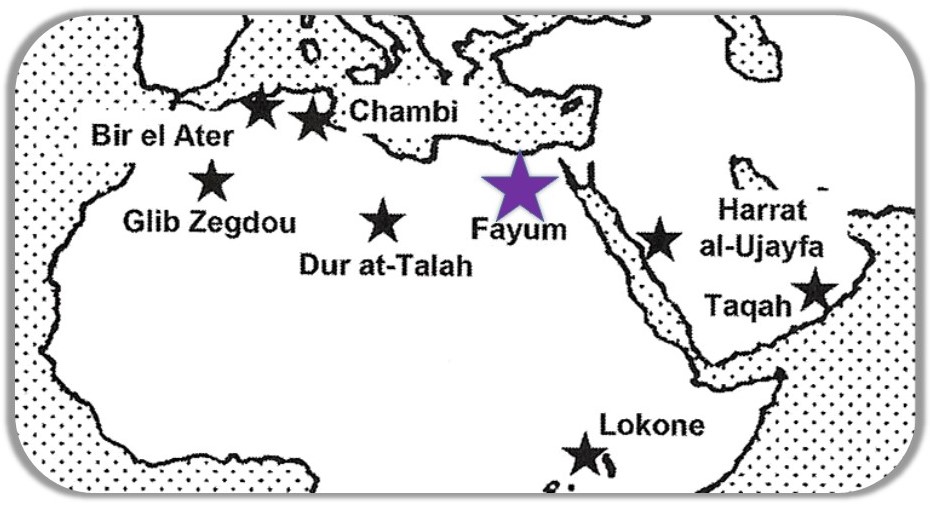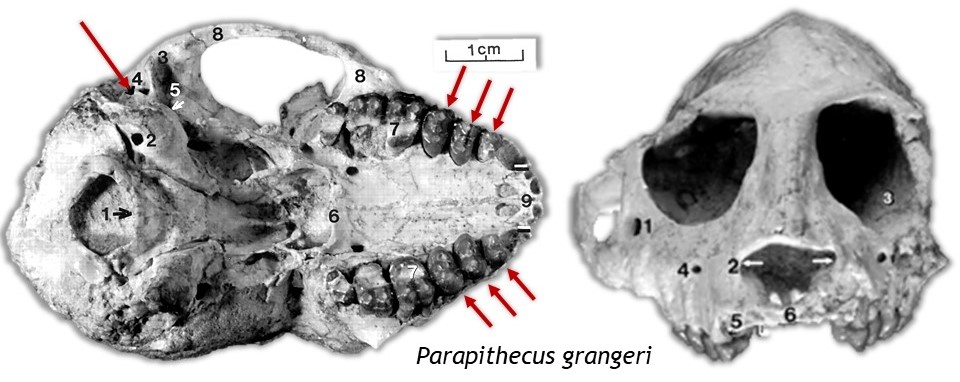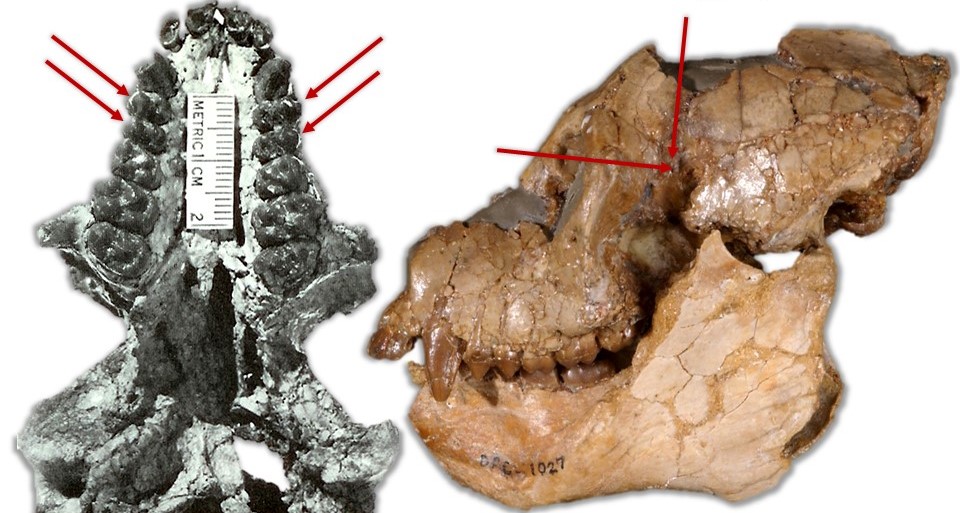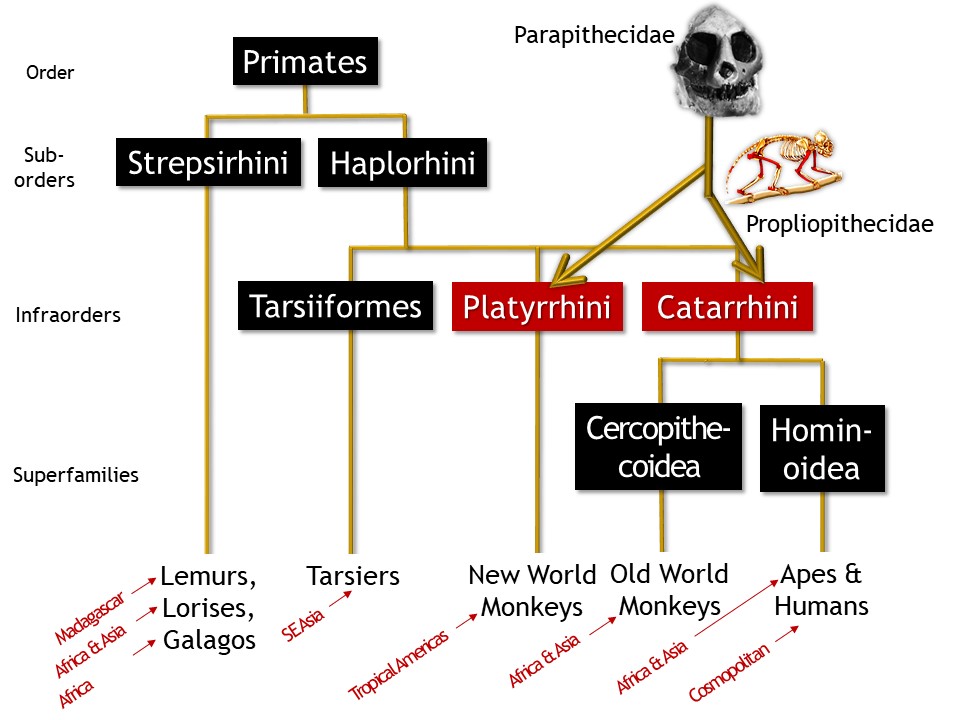Lab 10 Oligocene Fossil Primates
1/10
There's no tags or description
Looks like no tags are added yet.
Name | Mastery | Learn | Test | Matching | Spaced |
|---|
No study sessions yet.
11 Terms
Oligocene Epoch
33.9-23.03 Ma
Included: Aegyptopithecus, Parapithecus, and an extinct galago
Where were they?
The omomyid primates eventually give rise to the haplorrhine primates. Among these were the first-known monkeys (Parapithecidae) from which a slightly younger group arose (Propliopithecidae). By far, the best-known and oldest fossils come from Oligocene localities in the Fayum Depression in the Sahara Desert of Egypt.
warm and humid climate of Africa supported a tropical rainforest biome!

Oligocene Primate Traits
Forward-facing eyes
Nose below eyes
Post-orbital bar
Nails on digits
Divergent hallux
Oligocene Haplorrhine Traits
Closed eye orbits
Dry nose
Internal lacrimal ducts
Parapithecidae: (Superfamily Parapithecoidea)
Have the diagnostic traits of the Infraorder Platyrrhini and appear to be ancestral to:
New World monkeys (Platyrrhini)
Propliopithecidae
Oligocene Platyrrhini Traits in PARAPITHECIDAE:
2.1.3.3 dental formula (3 premolars)
Zygomatic-parietal cranial bone contact
NO ear tubes

Propliopithecidae: (Superfamily Propliopithecoidea)
Have the diagnostic traits of the Infraorder Catarrhini and appear to be ancestral to:
Old World monkeys (Cercopithecoidea)
Apes and humans (Hominoidea)
Oligocene Catarrhini Traits in PROPLIOPITHECIDAE:
2.1.2.3 dental formula (2 premolars)
Frontal-sphenoid cranial bone contact
Ear tubes

Oligocene Primate Classification
Parapithecidae & Propliopithecidae

PARAPITHECIDAE ADAPTIVE PROFILE
PLATYRRHINI TRAITS: 2.1.3.3 dental formula, no ear tubes, zygomatic-parietal cranial bone contact
ACTIVITY: Diurnal (examine the relative size of the eye orbit for skull length)
DIET: Some frugivorous, some folivorous (TBM above 500 g, premolars & molars have low-rounded cusps OR high-crested cusps)
LOCOMOTION: Quadrupedal (look at relative limb lengths)
FOSSIL SPECIES: Apidium, Parapithecus
GOOD MODERN PRIMATE MODEL: Titi monkeys in South America
PROPLIOPITHECIDAE ADAPTIVE PROFILE:
CATARRHINI TRAITS: 2.1.2.3 dental formula, ear tubes, frontal-sphenoid cranial bone contact
ACTIVITY: Diurnal (examine the relative size of the eye orbit for skull length)
DIET: Some frugivorous, some folivorous (TBM above 500 g, premolars & molars have low-rounded cusps OR high-crested cusps)
LOCOMOTION: Quadrupedal (look at relative limb lengths)
SEXUAL DIMORPHISM: Yes, see below
FOSSIL SPECIES: Aegyptopithecus, Propliopithecus
GOOD MODERN PRIMATE MODEL: Macaque monkeys in northern Africa and Asia